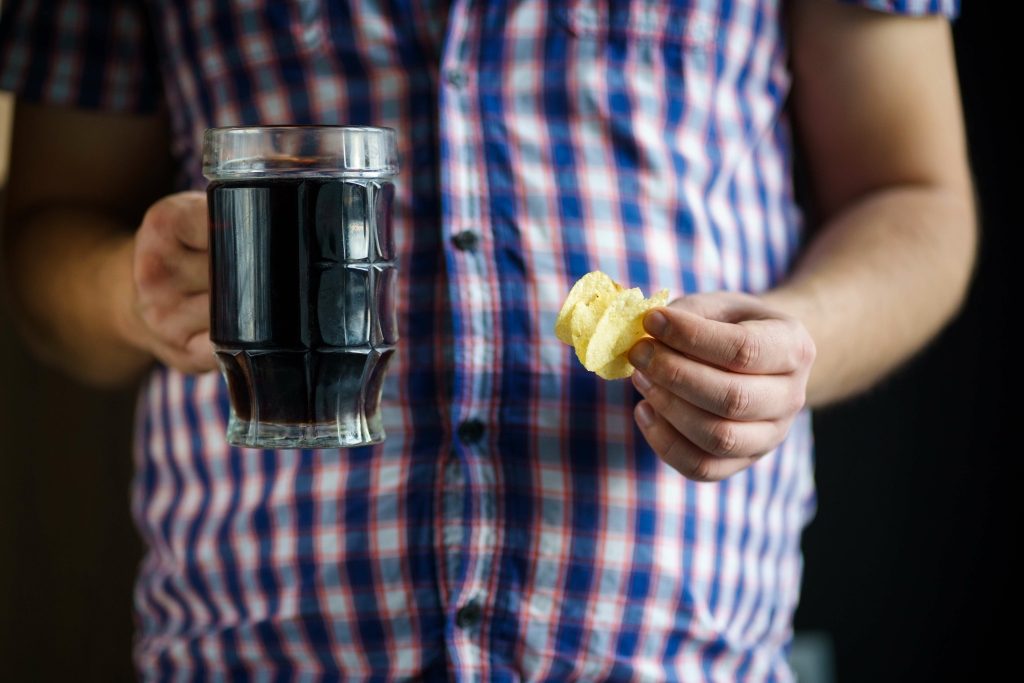A high intake of fruits and vegetables and avoiding processed or sugary foods is also important to getting the nutrients that your body needs. Due to ROS being formed naturally, cells have evolved several enzymatic and nonenzymatic ways to protect them [105,106]. In effect, ethanol or its derivatives impairs several of these defensive mechanisms, which could change the redox status, causing the antioxidant cell defenses to be compromised [107]. Nonenzymatic barriers, such as GSH and vitamins, play a key role in several cellular processes. Reduced glutathione (GSH) and vitamins are probably the most important nonenzymatic antioxidants and participate in a wide range of cellular functions.
There are holistic addiction treatment centers and substance use treatment programs that emphasize nutrition education, too. Up to 50% of people with an eating disorder abuse drugs or alcohol, which is five times the rate of the general population. Additionally, up to 35% of people who have abused drugs or been addicted also struggle with an eating disorder. That’s a rate 11 times higher than that found in the general population. The first step in treating addiction to any substance is to remove all traces of the substance from the body.
Recovery Needs: Necessary Nutrients
If individuals believe they have a problem with alcohol or if they drink more than the recommended amounts, they should speak with their doctor for support and advice. People with vitamin C deficiency or scurvy may also have issues with wound healing, swollen and bleeding gums, tooth loss, and jaundice. It’s important to note that withdrawing from alcohol can be particularly dangerous, especially if you’ve been drinking heavily for a long period of time. It’s recommended to consult with your doctor before beginning a new vitamin regimen to assure appropriate, personalized dosage and vitamins. Since you’ve found yourself on this article, you’re already moving in the right direction. ESSENTIAL Fit Tools are calculators to use as a basis for guidance and advancement, but should not be taken too seriously as they are not medical advice.

You can see a counselor to learn how to manage stress, join a support group to talk to others who understand what you’re going through, and get regular exercise to stay healthy and lower anxiety. A personalized plan can help make the most of nutritional therapy, so you may want to consider working with a dietitian. They’ll help you create a diet that addresses your unique health situation, weight, and personal diet needs. Ask your doctor for a referral, or contact your local hospital, community health center, or university.
Jaw-dropping Liver Damage Eyes Exposed: The New Killer Alarm You Can’t Actually Afford to Ignore
Chronic alcohol use can have devastating effects on the body, depleting essential vitamins and minerals and leading to serious health complications. By supplementing with the right vitamins, minerals, and antioxidants, individuals can support their healing process, restore nutrient levels, and promote overall well-being. A vitamin B complex supplement is typically recommended https://g-markets.net/sober-living/minnesota-association-of-sober-homes/ to correct deficiencies and promote liver health in heavy drinkers. This comprehensive supplement contains a range of B vitamins, including thiamine (vitamin B1), which is especially important in preventing the development of Wernicke’s encephalopathy. Thiamine deficiency can lead to severe neurological impairments, making supplementation vital during the recovery process.
Nutritional therapy, a treatment approach that involves nutrition education, changing your diet, and adding supplements, can help balance out this loss. Alcohol interacts with neurotransmitters including gamma-aminobutyric acid. Therefore, if individuals stop or reduce their alcohol intake, their brain must readjust, leading to withdrawal symptoms.
How Do Vitamins Support Liver Health in Alcoholics?
Incorporating vitamins such as B complex vitamins (particularly B12), vitamin D, vitamin A (in moderation), and vitamin K can provide essential support for your liver’s regeneration process. While exploring herbal remedies for alcoholic liver disease recovery can be beneficial when used under professional guidance, it is essential to exercise caution. B-complex vitamins such as B12 and folate are particularly beneficial as they aid in DNA synthesis and red blood cell formation. Vitamin C acts as an antioxidant, reducing oxidative stress within the liver caused by alcohol abuse. It also helps stimulate collagen production necessary for repairing damaged tissues.
- Switch up your meals by eating a range of foods from the groups you need.
- Remember that nutritional therapy should be just one piece of your whole treatment program.
- Experimenting within the bounds of healthy foods is one of the best ways to fuel your recovery.
- Ask your doctor for a referral, or contact your local hospital, community health center, or university.
When alcoholics are admitted to the emergency room, it isn’t uncommon for them to receive an intravenous dose of thiamine to prevent alcohol-induced cognitive deficits. Vitamins and their possible mechanisms of action against the liver injury caused by al-cohol consumption. Hcy is metabolized by cystathionine beta-synthase (CBS) and cystathionase to produce cysteine and glutathione (GSH) in transsulfuration processes. It is also important to note that SAM inhibits MTHFR while promoting CBS expression. As a result, a SAM shortage boosts 5-Methyl THF production while lowering 5,10-Methyl THF and GSH production.
What are some nutrient-rich foods that can support the recovery process for alcoholics?
Recovery.org offers resources to guide you through nutrition considerations and can also help connect you to treatment centers that provide holistic programs that integrate wellness and nutrition for recovery. In turn, these symptoms may cause an opioid user to not eat enough or absorb certain nutrients, or to suffer an imbalance of electrolytes such as sodium, potassium, and chloride. Nausea can also cause eating difficulties, which can make many opioid abusers malnourished. Secondly, addiction influences habits such as sporadic eating and poor nutrition that impair the body. What is much less publicized for those in recovery is the need for nutrition and the development of a healthy eating regimen – an often overlooked, yet crucial step in the process.

Immediately, I noticed changes in sleep, mood, skin, digestion, energy, and cravings–a complete release from the slog of recovery I have maintained to this day. This is the same program I use with my clients, who report the same results. Taking supplements can help alcoholics in experiencing withdrawal symptoms or undergoing detoxification.
Multivitamins typically contain adequate amounts of necessary vitamins and minerals for the day. These are recommended due to the decreased intake and absorption from chronic alcohol intake, putting alcohol drinkers at higher risk for deficiency. But, appropriate vitamins for recovering alcoholics are beneficial for the Thoughts of Recovery No 17 The Spiritual Malady Step 1 road to recovery. Alcoholics may derive as much as 50 percent of their daily caloric intake from alcohol, neglecting the foods and nutrients needed for a healthy diet. Alcoholics are commonly deficient in vitamin B6, thiamine, and folic acid; however, they still can gain weight because of the empty calories in alcohol.
- However, it’s essential to consult with a healthcare professional before starting any supplement regimen, especially if you have any underlying medical conditions or are taking other medications.
- In addition, other studies have studied vitamin B status as well [55,56,57].

